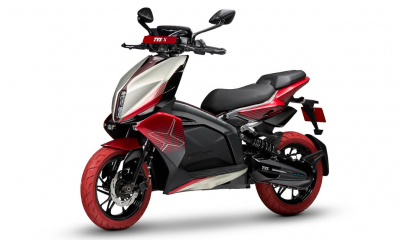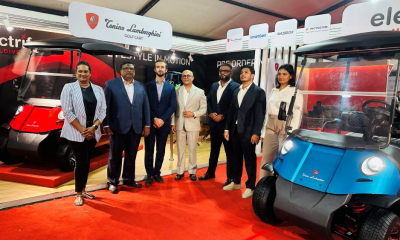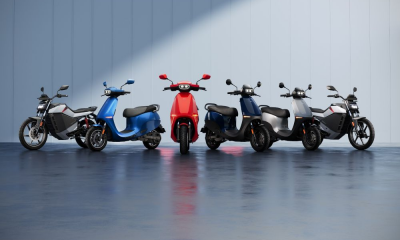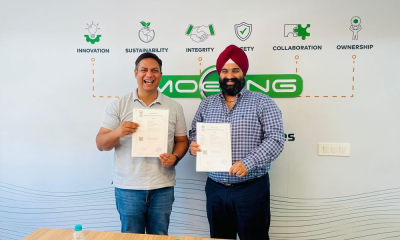

More in EV News
-


EV News
TVS Motor Unveils Six New Products, Showcases AR Smart Helmet and Expansion Plan for Europe
TVS Motor Company (TVSM), a global leader in two- and three-wheeler manufacturing, made a powerful debut...
-


EV News
VinFast Accelerates India Growth – Opens 24 Dealerships, Targets 35 Nationwide by End-2025
VinFast Auto India, the Indian arm of global electric vehicle manufacturer VinFast, has achieved a key...
-


EV News
Kinetic Green Tonino Lamborghini Appoints Electrify Maldives as Exclusive Dealer
Kinetic Green Tonino Lamborghini Pvt Ltd has appointed Electrify Maldives Pvt Ltd as the exclusive dealer...
-


EV News
Ola Electric Scales up Hyperservice into open platform
Ola Electric has announced a major transformation in India’s EV servicing landscape by scaling up Hyperservice into an...
-


EV News
Ola Electric’s 4680 Bharat Cell Battery Pack Secures ARAI Certification
Ola Electric today announced that its indigenously developed 4680 Bharat Cell battery pack in 5.2 kWh...
-


EV News
Mecolam Engineering: Reinforcing Global Confidence in Indian Composite Excellence
At Busworld Europe 2025, the world’s biggest platform for the bus and coach industry, Indian supplier...
-


EV News
MoEVing to deploy 700 Tata Motors Electric Vehicles for Zero-emission Deliveries
In a landmark move to decarbonise India’s last-mile logistics, MoEVing, a fast-growing electric mobility solutions provider,...
-


EV News
Telma Drives Safer and Cleaner Mobility at Busworld Europe 2025
At Busworld 2025, Telma’s pavilion stood out for its strong emphasis on innovation and sustainability. The...
-


EV News
Ctrine Engineering Highlights End-to-End Bus Development Expertise at Busworld 2025
At Busworld 2025, Ctrine Engineering Pvt. Ltd. showcased its comprehensive capabilities in bus design and development,...
-


EV News
From Breakthrough Technologies to Design Brilliance – Busworld Europe 2025 Captures the Industry’s Future
Busworld Europe 2025 concluded after yet another record-breaking edition — a show that was not just...












